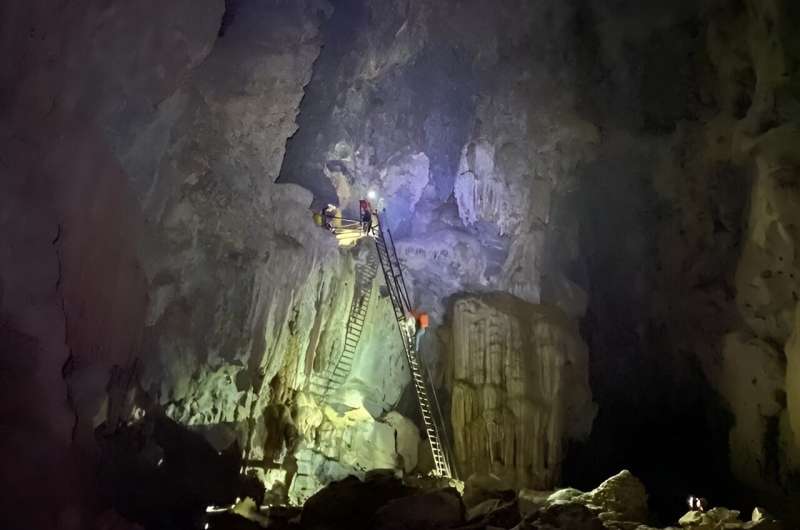This article has been reviewed according to Science X's editorial process and policies. Editors have highlighted the following attributes while ensuring the content's credibility:
fact-checked
peer-reviewed publication
trusted source
proofread
New research brings greater understanding of Asian winter monsoon

Scientists have discovered a new technique that will shed light on the phenomena of winter monsoons—the heavy autumn and winter rainfalls which can cause floods and landslides across southeast Asia.
While summer monsoons are well researched and understood, there is currently very limited understanding of winter monsoons—especially of how they have changed during periods when there has been no data available from weather stations.
It has therefore been difficult to make accurate, long-term predictions about the timing and intensity of winter rainfall in countries such as Vietnam, Thailand, Cambodia and Malaysia.
The Asian winter monsoon brings significant rainfall to some coastal areas of Vietnam, the Philippines, Southeast India, Sri Lanka and Japan, playing a critical role in agriculture and water resources, as well as natural hazard risks related to flooding and landslides.
These regions include some of the world's largest food producers and exporters, causing not only the regional economy but also the already precarious global food trade to be vulnerable to changes in winter monsoon rainfall.
By examining an 8,000-year-old stalagmite from a cave in central Vietnam, researchers have been able to extract information about changes in seasonal rainfall patterns in Southeast Asia over thousands of years.
And, in a new research breakthrough, they have for the first time been able to distinguish between the rainfall caused by local weather conditions, and that which resulted from conditions across a much wider geographical area.
The investigations were led by Annabel Wolf, a Ph.D. student at Northumbria University at the time of the research, supported by Dr. Vasile Ersek, a paleoclimatologist and geochemist working within Northumbria's Department of Geography and Environmental Sciences.
A paper detailing their findings, entitled "Deciphering local and regional hydroclimate resolves contradicting evidence on the Asian monsoon evolution," has been published by the journal Nature Communications.
Annabel Wolf, now a postdoctoral scholar at the University of California, Irvine's Department of Earth System Science, said, "The past evolution of the winter and summer monsoons in Southeast Asia has been debated for decades.
"By examining this stalagmite from Vietnam, we were able to track autumn and winter rainfall over a significant period and, crucially, to differentiate between the rain which had fallen due to local weather systems, and the rain caused by wider regional systems.
"Our main conclusion was that the regional component of the monsoon, caused by atmospheric circulation, shows a contradictory relationship between winter and summer monsoons, driven by insolation in the northern hemisphere.
"However, the results from the local rainfall samples showed a strong connection between summer and winter monsoons."
The findings of the research mean there is now potential to re-examine samples from other areas in Southeast Asia and extract the local and regional rainfall levels, leading to much greater understanding of how weather patterns have evolved over time and how they may continue to change in future.
In contrast to the very well-studied Southwest Summer Monsoon, there are no robust records documenting the long-term changes in Southeast Asian rainfall associated with the Northeast Winter Monsoon under pre-industrial conditions. This means changes to rainfall in this region over longer timescales are not well understood.
As a result, many climate models underestimate the winter monsoon rainfall by as much as 50%, leaving considerable uncertainty in future climate projections.
Speaking about the research Dr. Ersek said, "By shedding light on potential discrepancies in paleoclimate reconstructions, scientists now have a critical tool to refine their understanding of historical climate patterns.
"Our findings have the potential to inform policies and strategies aimed at mitigating the impacts of intense rainfall in Southeast Asia, which becomes more imperative as climate change continues to exert its influence on global weather patterns."
More information: Annabel Wolf et al, Deciphering local and regional hydroclimate resolves contradicting evidence on the Asian monsoon evolution, Nature Communications (2023). DOI: 10.1038/s41467-023-41373-9
Journal information: Nature Communications
Provided by Northumbria University



















